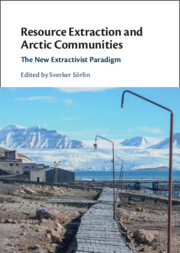Figures
1.1Map produced by the Northern Exploration Company during the First World War, indicating the firm’s ambition to integrate Spitsbergen into the British Empire
1.2Mining in the High Arctic: The Diavik diamond mine in Canada’s Northwest Territories, approximately 300 kilometers northeast of Yellowknife and 220 kilometers south of the Arctic Circle
2.3Detail of a map from 1646 of the Nasafjäll silver mine in Swedish Lapland by mining officer Hans Fredrik Lybecker the elder
3.2Road ahead? The last Norwegian coal mine (Gruve 7) in Adventdalen, closing in 2023
3.3Geopolitics: Science brings an international vibe to Svalbard, but it also marks Norwegian presence
3.5Ny-Ålesund: A former company town reinvented as a research hub
5.1Overview of Arctic Fennoscandia, Laevas Sámi Reindeer Community, and the Kemi River catchment area
5.2Timeline illustrating the establishment of industrial developments since their onset on Laevas Sámi Reindeer Community’s grazing grounds from 1900 to present
5.3Laevas Sámi Reindeer Community in the Swedish portion of Sápmi, the homeland of the Sámi people, overlapping disturbance zones, based on 500-meter buffers and total area of factors encroaching Laevas SRC’s grazing grounds
6.1Overview of Arctic Fennoscandia and the location of sites mentioned in the text
7.1A replica of a slide from Greenland Minerals and Energy Limited’s presentation at the PDAC Convention 2016 organized by the Prospectors & Developers Association of Canada
7.2A replica of a slide from Greenland Minerals and Energy Limited’s presentation at the PDAC Convention 2018 organized by the Prospectors & Developers Association of Canada
8.1Facing the subterranean world in the limestone mine of Hangelby, Sipoo, 1956
9.1Map over the Lunckefjell-Sveagruva mining area in Svalbard
9.4The deep water quay and the loading crane at Kapp Amsterdam
9.6The contaminated remains of the Nautanen concentration plant and copper smelter
10.3The spatial extent of the old Laver mining site, the applied mining concession Laver K nr1, and the proposed mining area realized to its full extent
10.4Number of workers in Rautuvaara (from 1961) and Hannukainen (from 1978) mining sites and number of nights spent in accommodation facilities in the province of Lapland and the municipality of Kolari
11.2Kirunavaara – the mountain where the LKAB company has been mining for over 120 years, designated as a national interest for cultural heritage preservation by the Swedish National Heritage Board, and an example of the heritage values that the mining operations have generated
11.3Schefferville and Matimekush, Québec: the empty lots to the right are where the houses were destroyed
11.4Tata mine and Iron Ore Company pit left from earlier exploitation
12.1Varanger peninsula: Meahcci or ripe for quartzite extraction?

